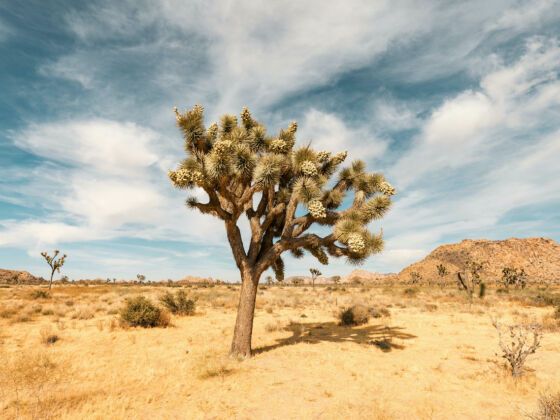MY ADULT SON once lived with me in a one-room cabin on a Mojave desert mesa. He is a writer and a musician. He was living in LA and worked as an extra at minimum wage. My son hung on for nine years but when his landlord jacked up the rent and the
price of gas escalated, his bank account had nowhere to go but down.

We moved around each other in 500 square feet of space. We moved around what can and can’t be seen. One night we walked out into the desert. I took him to the ruins of what might have been a smelter and a four-room house. A stone well is still there. Kids had filled it with dead branches, wire, and cans. I thought of how the desert eats everything.
Further up the dirt road, we turned toward the east. The sun burned polished copper over the mountains behind us. The light on the mountains ahead flared hot rose, then cooled to ultra-violet*. We walked up the narrow dirt road, past a gorgeous collection of empty plastic cigarette lighters glowing emerald and yellow and scarlet.
We both saw it at the same time:
a seated Buddha statue on a log
a person wrapped in a gray cloak
a Buddha
a threat
a Buddha
a lost soul.
We moved toward the Buddha. I was afraid. I remembered once walking alone, seeing the gray shape and feeling my heart leap. My fear had been of a human, of a man both unpredictable and unknown, a man who might hurt me—or who would be hurt by my fear that he was dangerous. I had crouched in a wash until I calmed.
My son and I took slow steps. Slower. The figure was still, its back straight, its concentration absolute. At about 20 feet, the Buddha resolved into the stump of a branch jutting from a downed Joshua tree. We retraced our steps and walked again toward the Buddha. Again it became a tree.
When a Tibetan Buddhist finds a natural form that resembles the visage or body of a god/dess, the Buddhist believes the rock, the tree, the whirlpool, or slab of melting ice is an Embodied Deity. No canon is required. No ceremony. Only light and time.
A few days later I walked out alone. I greeted the Joshua, pressed my face to the cool wood, then sat in the sand at its base. By last light, I saw a flicker of something white in the bark. A delicate spine, each vertebrae intact, lay in a deep crack. The spine was no longer than the first two joints of my little finger. It was no thicker than the cotton cord the monks tie around the neck of someone lucky enough to take part in an empowerment.
I touched the spine. I wanted it, but I remembered Dine and Tibetan Buddhist sand-paintings, the fine difficult work; and at the close of the ceremony, the images returned to their origins. I imagined the crack in the bark without the comet curve of the spine. I knew it was not my privilege, but Time’s to take away the bones.
A week later, my son and I climbed up a basalt boulder slope and rested, looking out over the twilight desert. It had been too long since I had felt harsh rock under my hands, had felt my breath catch as I teetered at the balance point and pulled myself up. We sat on boulders. A bird hunted insects on the slope below. It lifted, startled, and skittered around us.
My son said, “What I like about the silence here is that I just heard that little bird fly by.” He extended his hand palm down to the ground and fluttered it. “Whirrrrrrrrrrrrrrrrr.” *Ultraviolet (UV) light is electromagnetic radiation with a wavelength shorter than that of visible light, but longer than X-rays. It is so named because the spectrum consists of electromagnetic waves with frequencies higher than those that humans identify as the color violet. ~ Wikipedia